Pulmonary Arterial Hypertension (PAH): Treatment Strategies- Market Insight, Clinical Trials, Product Analysis, Patent Analysis, Competitive Analysis and Market Forecast – 2023-2033
Pulmonary hypertension (PH) poses a serious threat to cardiovascular health, primarily affecting the arteries in the lungs and the right side of the heart. In the case of Pulmonary Arterial Hypertension (PAH), a subset of PH, the arteries in the lungs undergo damage, leading to narrowed, blocked, or destroyed vessels. This impedes blood flow through the lungs, elevating blood pressure in the lung arteries and eventually weakening the heart muscle.
The symptoms of PH, such as shortness of breath, chest pain, and fatigue, develop gradually and may go unnoticed for extended periods. The condition is categorized into five groups based on its cause, ranging from idiopathic PAH to PH triggered by various health conditions.
While there is no cure for PH, treatments are available to enhance quality of life and extend Pulmonary hypertension (PH) demands a multifaceted treatment strategy tailored to the specific subtype and individual patient characteristics. While a definitive cure remains elusive, advancements in medical science have led to targeted therapies designed to alleviate symptoms, improve exercise capacity, and slow disease progression.
a. Calcium Channel Blockers: In responders, these medications lower blood pressure in pulmonary arteries and the body.
b. Diuretics: “Water pills” help manage fluid retention, a common symptom in PAH patients.
c. Oxygen Therapy: Ensures adequate oxygen levels in the blood, alleviating shortness of breath.
d. Pulmonary Vasodilators: Medications like prostacyclin analogs, endothelin receptor antagonists, and phosphodiesterase-5 inhibitors relax pulmonary arteries, improving blood flow and reducing strain on the heart.
a. Anticoagulants: Essential for preventing blood clots in the pulmonary arteries.
b. Balloon Atrial Septostomy (BAS): A procedure creating a hole between the atria, reducing strain on the right side of the heart.
c. Balloon Pulmonary Angioplasty (BPA): Catheter-based procedure using a balloon to widen the pulmonary artery, particularly when surgery is not an option.
d. Medication (Soluble Guanylate Cyclase Stimulator): Slows down disease progression.
e. Pulmonary Endarterectomy (PEA): Surgical removal of blood clots from the lungs, offering a potential cure for CTEPH.
a. Dietary and Lifestyle Changes: Customized nutritional plans and lifestyle modifications.
b.Medication (for Underlying Conditions): Managing conditions such as heart failure or hypertension with appropriate medications.
c. Oxygen Therapy: Administered when there is insufficient oxygen in the blood.
d. Surgery (Heart Valve Repair): In cases where structural issues contribute to PH.
a. Evolving Treatment Approaches: Tailored plans as understanding of these conditions progresses.
Ongoing Monitoring and Multidisciplinary Care:
a. Regular follow-ups to assess treatment efficacy and adjust strategies.
b. Inclusion of various healthcare professionals like pulmonologists, cardiologists, and surgeons for comprehensive care.
Management of PH caused by heart or lung issues involves addressing the underlying conditions, requiring diverse approaches such as dietary and lifestyle changes, medication, oxygen therapy, and sometimes surgery like heart valve repair. Treatments for PH triggered by other medical conditions continue to evolve.
For some with severe PH, a lung transplant might be a last resort option. While there is no universal cure, a personalized care plan involving a multidisciplinary healthcare team can significantly improve the patient’s prognosis and quality of life.
Early diagnosis and intervention are crucial, emphasizing the importance of seeking medical attention for accurate diagnosis and tailored treatment. Though PH presents significant challenges, ongoing research and advancements in treatment provide hope for better outcomes and enhanced quality of life for those affected by this condition.
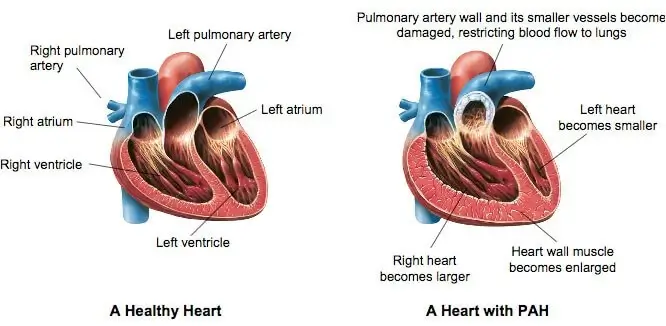
This report undertakes an exhaustive exploration of therapies and management strategies for Pulmonary Arterial Hypertension (PAH), encompassing clinical, molecular, and genetic dimensions. It aims to provide a comprehensive view of the diverse landscape in PAH treatment.
Delving into the clinical and molecular intricacies of PAH, the report reveals genetic factors influencing the disease and their treatment implications. This in-depth analysis offers a nuanced understanding for crafting effective therapeutic interventions tailored to the unique characteristics of PAH.
An in-depth examination of PAH’s pathophysiology and underlying mechanisms is conducted, with the goal of uncovering potential targeted therapeutic avenues crucial for advancing treatment modalities in the context of this complex pulmonary disorder.
The report outlines the current medical, therapeutic, and supportive approaches for PAH management. Relevant data is incorporated to provide a holistic understanding of the existing treatment landscape, encompassing both traditional and emerging interventions.
Emphasizing the paramount importance of early diagnosis and personalized care, the report underscores tailored treatments and multidisciplinary approaches designed to optimize outcomes for individuals diagnosed with PAH. Early intervention strategies and advancements in diagnostic tools are explored.
Identifying key market drivers and emerging trends in PAH treatment, the report integrates market growth data to offer insights into the dynamic landscape of PAH therapies. This ensures stakeholders gain a well-informed perspective on the market dynamics influencing PAH treatment strategies.
Providing valuable insights into advancements, ongoing clinical trials, and innovations shaping PAH management, the report explores opportunities for improvement in the diagnosis, treatment, and overall care of PAH patients. The focus is on highlighting breakthroughs that contribute to enhanced patient outcomes.
Projections of market growth and lucrative prospects within the PAH treatment market are presented. Backed by relevant market data, these projections offer stakeholders a forward-looking perspective on the evolving landscape of PAH therapies, aiding strategic decision-making and investment considerations.
In order to grasp a comprehensive insight into the dynamic landscape of Pulmonary Arterial Hypertension (PAH) research and development, it is imperative to explore the current state of scientific inquiry and the emergence of innovative treatment strategies. This understanding serves as a vital compass for making informed decisions in the realm of PAH therapy, guaranteeing strategic choices and the adept integration of treatments within the continually evolving healthcare landscape.
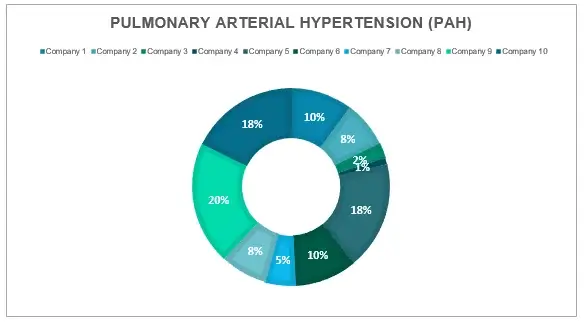
In the domain of Pulmonary Arterial Hypertension (PAH) research and market analysis, company profiling plays a crucial role. This entails a thorough investigation of companies operating in the PAH sector, offering a detailed view of a company’s historical background, product portfolio, financial stability, competitive strategies, and recent achievements. This valuable information aids in evaluating the competitive landscape within the PAH market and pinpointing potential opportunities for collaboration and strategic partnerships that can drive advancements and innovation in the field.
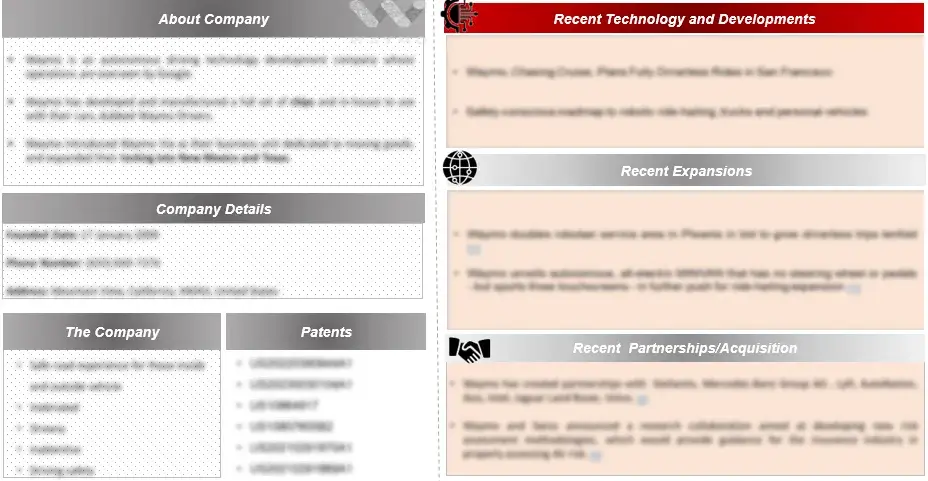
In this report, a comprehensive patent analysis will be undertaken to thoroughly assess the intellectual property landscape within the Pulmonary Arterial Hypertension (PAH) domain. The objective of this analysis is to unveil significant patents, identify influential inventors, and highlight emerging technological trends specific to the PAH sector.
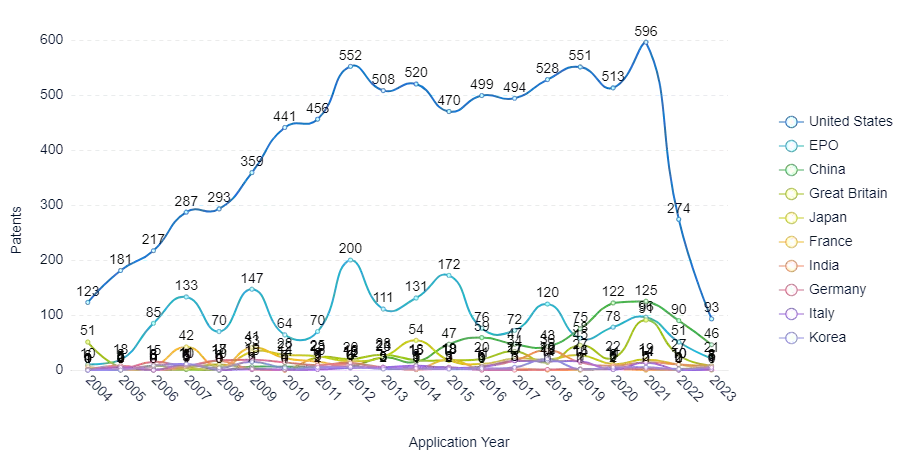

The clinical trial analysis segment within a market research report provides an in-depth assessment of clinical trials associated with Pulmonary Arterial Hypertension (PAH). This involves a meticulous breakdown of trial categories, study structures, research methodologies, and participant characteristics. The primary objective is to evaluate the effectiveness, safety, and outcomes of pharmaceuticals and medical interventions within the context of PAH.
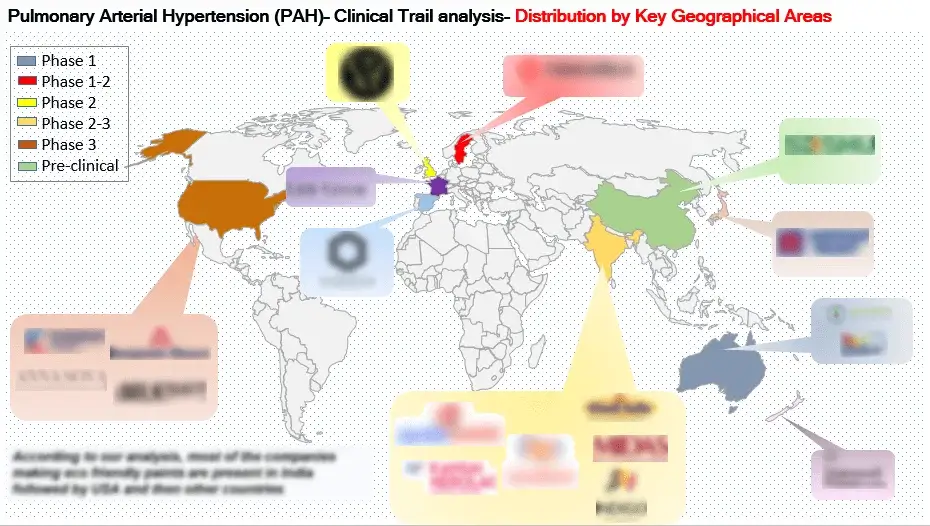
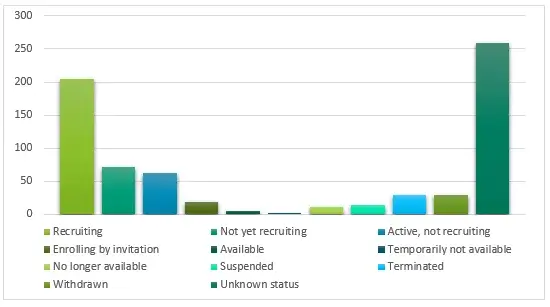
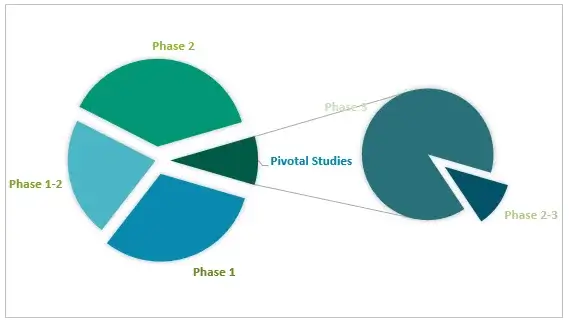
In a market research report focused on Pulmonary Arterial Hypertension (PAH), the market forecast section delivers a comprehensive perspective on imminent market trends, growth prospects, and pivotal factors shaping supply and demand dynamics. This section provides quantitative predictions and imparts valuable insights into market size, revenue forecasts, and potential pathways for growth within the PAH domain.
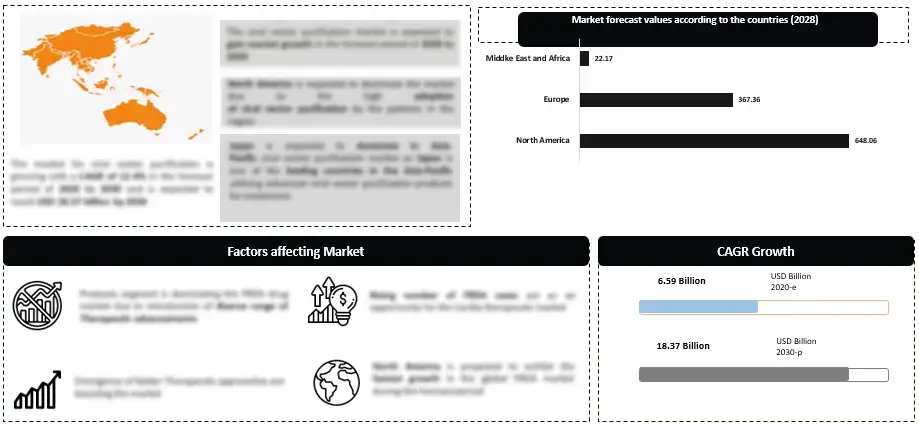
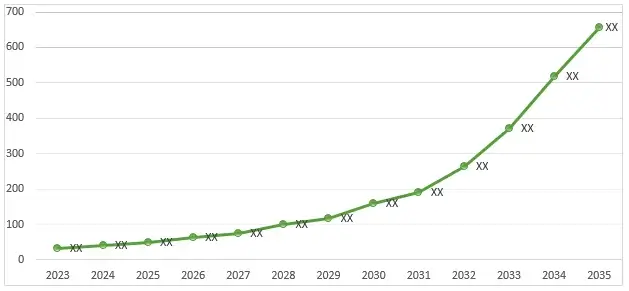
In this market research report centered on Pulmonary Arterial Hypertension (PAH), the section dedicated to the competitive landscape will furnish a succinct overview of prominent market participants. It will include their individual market shares and provide concise profiles delineating their strengths, weaknesses, and strategic approaches within the PAH domain.
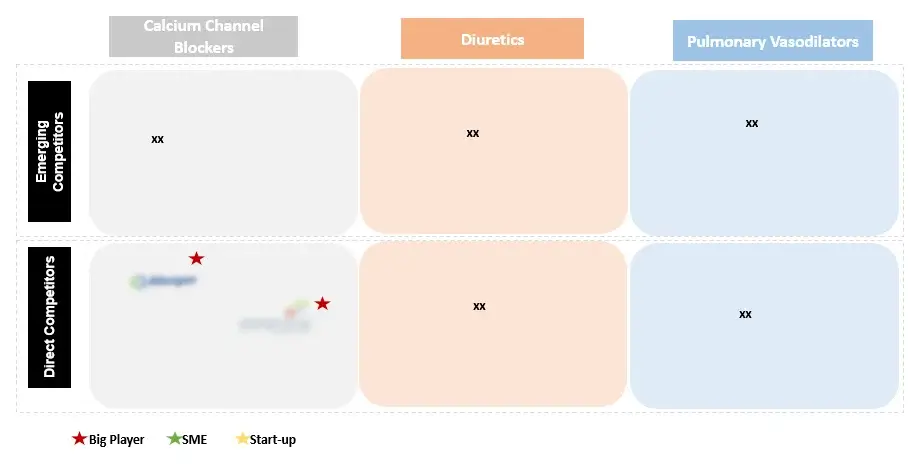
Uncover the Essence and Mechanisms of Pulmonary Arterial Hypertension, shedding light on its distinctive attributes and underlying vascular pathophysiology within the realm of managing this pulmonary disorder.
Explore a Holistic Approach to Pulmonary Arterial Hypertension Management, covering Symptomatic Alleviation, Pharmacological Interventions, and Tailored Therapeutic Strategies crafted to address the multifaceted challenges posed by this progressive cardiovascular condition.
Navigate Strategies for Timely Identification and Successful Management of Pulmonary Arterial Hypertension, with the aim of enhancing patient outcomes through early intervention and precise PAH treatment modalities.
Stay Informed about the Latest Breakthroughs in Targeted Pulmonary Arterial Hypertension Therapies, overcoming obstacles and exploring innovative pathways in the ever-evolving field of PAH management.
Assess the Worldwide Landscape of Pulmonary Arterial Hypertension Management within the domain of Cardiovascular Disorders, identifying emerging trends and investment potentials in PAH therapeutics for improved patient care and cardiovascular health enhancement.
Delve into Pioneering Drug Candidates and Intellectual Property Transforming Pulmonary Arterial Hypertension (PAH) Treatments. Explore the cutting-edge approaches and patents driving advancements in managing PAH, a crucial aspect of cardiovascular disorder therapy.
Discern Growth Prospects and Unique Challenges in the Pulmonary Arterial Hypertension (PAH) Management Market within the context of cardiovascular disorders. Evaluate the evolving landscape for PAH therapies and the obstacles encountered in improving cardiovascular outcomes for patients.
Grasp Current and Future Trends in the Pulmonary Arterial Hypertension (PAH) Management Market, unraveling the dynamics shaping the field of cardiovascular disorder management and cardiovascular health preservation.
Assess Emerging Therapies and Innovative Strategies for Advancing Therapeutics in the management of Pulmonary Arterial Hypertension. Stay up-to-date with breakthroughs and progress in PAH treatment options.
Stay Informed About Developments in Clinical Trials for Pulmonary Arterial Hypertension (PAH) Treatment. Discover the latest advancements and potential breakthroughs in PAH therapies through ongoing clinical research.
Gain Insights into Industry Leaders Shaping the Landscape of Pulmonary Arterial Hypertension (PAH) Research and Cardiovascular Health Enhancement within the domain of cardiovascular disorders therapy. Explore organizations and researchers at the forefront of PAH management.
In order to give the most precise estimations and forecasts, Wissen Research uses an extensive and iterative research approach that is focused on reducing deviation. The company blends top-down and bottom-up methodologies for market segmentation and quantitative estimation. In addition, data triangulation, which examines the market from three separate angles, is a recurrent topic present in all of our research studies. Important components of the approach used for all of our studies include the following:
Preliminary data mining
On a wide scale, unprocessed market data is collected. Continuous data filtering makes sure that only verified and authenticated sources are taken into account. Additionally, data is extracted from a wide range of reports in our repository and from a number of reputable premium databases. We gather information from raw material suppliers, distributors, and purchasers to help with this since understanding the entire value chain is crucial for a thorough understanding of the market.
Surveys, technical symposia, and trade magazines are used to gather information on technical concerns and trends. Technical information focusing on white space and freedom of movement is also obtained from an intellectual property standpoint. Additionally, information on the industry’s drivers, constraints, and pricing patterns is obtained. As a result, a variety of original data are included in the material that is then cross-validated and certified with published sources.
Statistical model
We use simulation models to generate our market projections and estimates. Every study receives a special model that is tailored to it. Data for market dynamics, the technology environment, application development, and pricing patterns are gathered and supplied into the model all at once for analysis. The relative relevance of these factors is investigated, and their impact on the forecast period is assessed, using correlation, regression, and time series analysis. The process of market forecasting combines technological analysis with economic strategies, practical business acumen, and subject expertise.
Econometric models are frequently used for short-term forecasting, but technology market models are typically employed for long-term forecasting. These are based on a confluence of the business environment, regulatory environment, economic projection, and technical landscape. In order to develop global estimates, it is preferable to estimate markets from the bottom up by integrating data from key regional markets. This is required to ensure accuracy and a complete comprehension of the subject. Among the variables taken into account for forecasting are:
We give these criteria weights and use weighted average analysis to assess their market influence in order to calculate the anticipated market growth rate.
Primary research | Secondary research |
· Manufacturers · Technology distributors and wholesalers · End-user surveys · Consumer surveys | · Company reports and publications · Government publications · Independent investigations · Economic and demographic data · Online searches · Research reviews · Reference customers |
1.1 Overview of Pulmonary Arterial Hypertension (PAH)
1.2 Key Findings
1.3 Market Insights and Recommendations
2.1 Research Background
2.2 Scope and Methodology
2.3 Report Structure
3.1 Definition and Classification of PAH
3.2 Symptoms, Diagnosis, and Clinical Presentation
3.3 Pathophysiology and Genetic Basis
3.4 Epidemiology and Prevalence
3.5 Causes and Risk Factors
3.6 Treatment
4.1 Market Size and Growth Trends, 2023-2033 (USD Million)
4.2 Market Segmentation (By Type, Treatment, Geography, etc.), 2023-2033 (USD Million)
4.3 Market Drivers and Challenges
5.1 Overview of PAH Patents
5.2 Top Assignees
5.3 Geography Focus of Top Assignees
5.4 Legal Status
5.5 Geography
5.6 Assignee Segmentation
5.7 Technology Evolution
5.8 Key Patents
5.9 Patent Trends and Innovations
5.10 Key Players and Patent Portfolio Analysis
6. Clinical Trial Analysis
6.1 Chapter Overview
6.2 Analysis by Trial Registration Year
6.3 Analysis by Phase of Development
6.4 Analysis by Number of Patients Enrolled
6.5 Analysis by Status of Trial
6.6 Analysis by Study Design
6.7 Analysis by Geography
6.8 Analysis by Key Sponsors / Collaborators
7. Product Analysis
7.1 Medications- Medication analysis, exploring pharmaceutical interventions, effectiveness, and market adoption.
7.1.1 Vasodilators
7.1.2 Soluble Guanylate Cyclase (sGC) Stimulators
7.1.3 High-Dose Calcium Channel Blockers etc.
7.2 Diagnostic Approaches- Comprehensive analysis of technique, usage trends, effectiveness, market dynamics and market adoption.
7.2.1 Right Heart Catheterization (RHC)
7.2.2 Electrodiagnostic Tests (EMG, NCS) etc.
8. Market Analysis by Region
8.1 North America
8.1.1 Total Market Size of PAH in North America (2023-2033)
8.1.2 Market Size of PAH by Therapies in North America (2023-2033)
8.2 Europe
8.2.1 Total Market Size of PAH in Europe (2023-2033)
8.2.2 Market Size of PAH by Therapies in Europe (2023-2033)
8.3 Asia-Pacific
8.3.1 Total Market Size of PAH in Asia-Pacific (2023-2033)
8.3.2 Market Size of PAH by Therapies in Asia-Pacific (2023-2033)
8.4 Latin America
8.4.1 Total Market Size of PAH in Latin America (2023-2033)
8.4.2 Market Size of PAH by Therapies in Latin America (2023-2033)
8.5 Middle East and Africa
8.5.1 Total Market Size of PAH in Middle East and Africa (2023-2033)
8.5.2 Market Size of PAH by Therapies in Middle East and Africa (2023-2033)
9. Competitive Landscape
9.1 Parameters for benchmarking
9.2 Benchmarking of companies
9.3 Identifying top competitors
9.4 Portfolio Analysis of top competitors
9.5 Recent Developments and Strategies
10. Future Outlook and Market Opportunities
10.1 Advancements in Research and Technology
10.2 Unmet Needs and Potential Market Gaps
10.3 Market Forecast and Growth Opportunities
11. Conclusion
12. Appendix
A. Glossary of Terms
B. List of Abbreviations
C. References
S.no | Key Highlights of Report | |
1. | Patent Analysis | · Top Assignee · Geography focus of top Assignees · Assignee Segmentation · Network analysis of the top collaborating entities in Pulmonary Arterial Hypertension (PAH) therapy patent applications · Technology Evolution · Key Patents · Application and Issued Trend · Key technology |
2. | Market analysis | · Current Treatment Options · Emerging Therapies and Research Developments (by product analysis and scientific analysis) · Strategic activities · Therapeutic activity of drugs · Company portfolio · Detailed profiles of the key players that are engaged in the development of approved drugs · Strategic Activities |
3. | Clinical Trials | · Analysis of clinical trial through graphical representation · Coverage of treatments from pre-clinical phases till commercialization (also including terminated and completed studies) |
4. | Forecast | · Detailed comprehension of the historic, current and forecasted trend of market by analysis of impact of these treatments on the market |
5. | Opportunity Analysis | · Technology evolution based on problem solution · Potential licensees · Geography of suppliers · Treatment trends · Unmet needs · SWOT · Drivers and barriers |
6. | KOLs | · A detailed analysis and identification of the key opinion leaders (KOLs), shortlisted based on their contributions |
LIST OF FIGURES
Figure number | Description |
Figure 1 | Terminology of Pulmonary Arterial Hypertension (PAH) Over The Years |
Figure 2 | Pulmonary Arterial Hypertension (PAH) Treatment– History and Present |
Figure 3 | Projection of Pulmonary Arterial Hypertension (PAH) till 2033 in different geographies |
Figure 4 | Technology Categorization Of Drug Delivery Methods For Pulmonary Arterial Hypertension (PAH) |
Figure 5 | Recent Technology Trends in Pulmonary Arterial Hypertension (PAH) |
Figure 6 | Technology Evolution in Drug Delivery Market of Pulmonary Arterial Hypertension (PAH) |
Figure 7 | Geographical Distribution of Patents of Top Assignees |
Figure 8 | Assignee Segmentation (Companies) |
Figure 9 | Assignee Segmentation (Educational Establishment) |
Figure 10 | Patent Based Key Insights Of xx |
Figure 11 | Patent Based Key insights of xx |
Figure 12 | Patent Based Key insights of xx |
Figure 13 | Geographic Distribution of the Universities/Research Organizations Filling Patents On Various Drug Delivery Approaches |
Figure 14 | Key Summary Regarding the Patent Filing On Pulmonary Arterial Hypertension (PAH) |
Figure 15 | Product Pipeline of Different Approaches with Companies Name |
Figure 16 | Portfolio for Approved Product |
Figure 17 | Clinical Trials Conducted till Date by Different Companies and Universities |
Figure 18 | Clinical Trials based Key Insights |
Figure 19 | Key Growth Drivers for Pulmonary Arterial Hypertension (PAH) Market |
Figure 20 | Restraints for Pulmonary Arterial Hypertension (PAH) Market |
Figure 21 | xx Portfolio (Top Player) |
Figure 22 | xx Portfolio (Top Player) |
Figure 23 | xx Portfolio (Top Player) |
Figure 24 | xx Portfolio (Top Player) |
Figure 25 | xx Portfolio (Top Player) |
Figure 26 | xx Portfolio (Start-up) |
Figure 27 | xx Portfolio (Start-up) |
Figure 28 | xx Portfolio (Start-up) |
Figure 29 | Strategic Activities Including Collaboration, Partnerships and Acquisitions |
Figure 30 | Research Methodology for Patent, Selection and Analysis |
Figure 31 | Research Methodology for Clinical Trials, Selection and Analysis |
LIST OF GRAPHS
Graph number |
Description |
Graph 1 | Number of people worldwide with Pulmonary Arterial Hypertension (PAH) |
Graph 2 | Problem Solution Analysis |
Graph 3 | Top Assignees in Pulmonary Arterial Hypertension (PAH) |
Graph 4 | Technology Focus of Top Assignees (IPC-CPC Classes) |
Graph 5 | Top Countries of Origin of Patents |
Graph 6 | New entrants in drug delivery field |
Graph 7 | Legal Status |
Graph 8 | Most Cited Patents |
Graph 9 | Patents with Largest Invention Families |
Graph 10 | Most Claim-Heavy Patents |
Graph 11 | Filing Trends |
Graph 12 | Clinical Trial Filing Timeline |
Graph 13 | Recruitment Status of the Clinical Trials Related to the Different Drug Delivery Approaches |
Graph 14 | Clinical Trials Phases with Respect to Specific Drug Delivery Approach |
Graph 15 | Weighted Scores for Top 64 Players According to Benchmarking Criteria |
Graph 16 | Pulmonary Arterial Hypertension (PAH) (CAGR: 2023-2033) |
Graph 17 | Pulmonary Arterial Hypertension (PAH) Market Share: Distribution by Key Geographical Area, 2023-2033 |
LIST OF TABLES
Table number | Description |
Table 1 | Parameters included and excluded for conducting the analysis |
Table 2 | Technology Classes with Definitions |
Table 3 | Patent Litigation |
Table 4 | Highest Market Valued Patents |
Table 5 | SWOT Analysis of Top 3 Players |
Table 6 | Parameters and their score for Benchmarking |
Table 7 | Weighted scores for top 5 players according to benchmarking criteria |
© Copyright 2024 – Wissen Research All Rights Reserved.